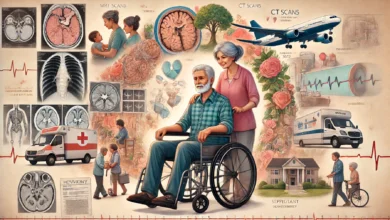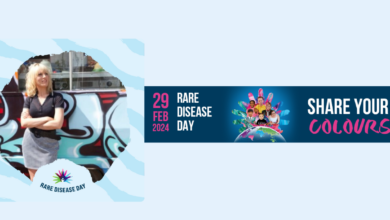
There aren’t really words to truly describe what it’s like going into brain surgery. I remember seeing a row of patients to my left, similarly in their cold hospital beds, waiting for their neurosurgeons to bring them into the operating room and begin a potentially life-altering surgery— the only difference is that they were all over the age of 60, while I was only 23.

The term “brain surgery” has a significant reputation, and not without reason. Worried friends and family filled my ears and inboxes with their concerns and opinions; some believed it was best that I pursued a symptom management approach and avoided going “under the knife”, while others thought that stopping my bleed was the primary chance I had at diminishing my long list of symptoms and leading a somewhat normal life. The one thing they all had in common, however, is that they were afraid. Afraid of what my recovery may look like, yes, but mostly afraid for my operation itself. Nobody knew what to expect.
Fear was never an option for me. I had been through way too much to not accept the surgery with open arms, and in fact, with a plethora of gratitude.

Trouble strikes after college
I had recently graduated from NYU in 2023 with both two majors and a minor. I am an extremely social person by nature, and I didn’t have huge concerns for myself post-grad— surely, I thought, I’d find my way like everyone else at least seems to do. However, by July of that same year, my symptoms hit me like a slap in the face, and the entire trajectory I painted for myself was quickly altered.
It began with chronic nausea. Everyday I was tied to the toilet, at first unable to reliably attend interviews, and soon barely even having the energy to surf LinkedIn. This began my long-winded relationship with my GI doctor, who at first diagnosed me with five stomach ulcers via endoscopy. I was taking an abnormally large amount of Advil daily, which for years I had said was to deal with “chronic migraine;” I know now that I was actually attempting to regulate the pain of an active hemorrhage in my brain.
We healed the ulcers, but the nausea continued anyway. I began developing significant abdominal pain, congruent to someone stabbing me with a knife and twisting it repeatedly. I was referred to gynecology, diagnosed with endometriosis, and received laparoscopic surgery on Halloween of 2023. The abdominal pain lessened, the nausea bettered for a while, and I wanted to believe that we found the root cause and I could now continue on with a normal life.

Symptoms that range from hearing loss to seizures
As the holidays approached, I began to notice hearing loss in my right ear. I caught myself turning my left side towards friends in attempt to catch what they were saying, and even then, they were occasionally cut off by strange new ringing or buzzing sounds. I couldn’t help but hope that some small insect had crawled into my ear during the night, and the beating of its wings was somehow causing these new ailments. But deep down, I knew better.
It became increasingly apparent that something was seriously wrong. I grew up a dancer, and have certainly never struggled with coordination, and yet, now I couldn’t seem to stand on my own two feet quite right. It’s like I didn’t even know my own limbs anymore: They were merely strangers, causing me to lose my balance, feel lightheaded, and take repeated falls.
This developed into regularly fully losing consciousness and exemplifying seizure activity. Then I couldn’t properly feel my hands or feet: They tingled like they were falling asleep. There was significant nerve pain in both my legs and abdomen, and the smallest movements made me feel like my body was bursting into flames. To top that off, I was frequently waking up in bloody sheets. My skull and spine itched aggressively around the clock, and while I controlled my impulses to scratch during the day, I was unable to control what I did in my sleep.

I saw two different neurologists at home in NYC. The first one predictably asked me to get an MRI, which I did. I saw the radiology report myself, mentioning a cavernous malformation, venous anomaly, and superficial siderosis. Admittedly, I Googled all three, and it’s safe to say that I didn’t like what I saw when it came to SS.
I saw this neurologist again, but to my naive surprise, she had never heard of SS. She even asked me to show her my own iPhone search of the condition. Knowing that I wouldn’t get the help I needed here, I pursued another local referral. The story was similar— while she claimed to know of SS, she continued to advise symptom management, and assured me that I should be okay in the long term.
As my symptoms continued to be serious and debilitating in the new year, I knew it was time to take matters into my own hands. Despite my fears, I dove into what information is available online. I was shocked to learn that only two doctors in the U.S. specialize in the condition, presumably because it’s extremely rare— it affects less than one in one million people, and there are under 300 known cases in the U.S. currently. It was no wonder to me now that nobody I had seen seemed to really grasp what was going on.
Diagnosis: the active bleed
I found Dr. Levy in Boston, and I quickly booked an appointment to meet him in February. In retrospect, there is absolutely nothing better I could’ve chosen to do for myself. One look at my MRIs confirmed that I was actively bleeding into my brain visibly. My cavernous malformation and large venous anomaly (in simpler terms, clustered abnormal cells) were pooling blood into my skull, and this blood was forming iron deposition. If left alone, I was at high risk to continue slowly bleeding, which meant experiencing my myriad of symptoms and further growing my iron deposits. If I wanted to stop the bleed, I needed intervention.

“Have you avoided looking at this because you are scared of neurosurgery?” I remember Dr. Levy asking me. “No, honestly,” I replied, without hesitation. “Nobody has known what’s going on with me. If I need surgery, then I’ll get surgery.” And so, that simply, it was settled— I was referred to four different neurosurgeons in NYC.
I met them all, multiple of whom told me my bleed was too deep for them to feel comfortable operating. However, all of my concerns were washed away when I visited Mount Sinai and met both my future surgeon and his PA. Specializing in cerebral malformations, they were confident that they could both safely and successfully remove the part of my brain that was bleeding and hopefully prevent me from developing any further problems.

There really isn’t anyone that you have to trust as much as you trust your brain surgeon. You literally choose to temporarily put your entire life in their hands, as well as your future outcome. Yet my symptoms alone had completely put my life on hold, with me basically living in and out of doctors’ offices as well as the hospital ER, not to even mention everything I had learned about SS through Dr. Levy— if I can stop the bleed now, I can prevent further blood pooling and iron deposition. There wasn’t a question left about what I knew I had to do, and I’m lucky to have had a surgeon that I wholeheartedly trusted to do it.
Open skull surgery
I had the surgery on May 14. The open-skull procedure took the entire day, and as I was warned beforehand, I spent multiple nights in the neurological ICU. To be honest, I was so optimistic about the surgery that I didn’t anticipate the pain I would later experience. The entire back of my head felt like it was resting on a bed of glass, no matter what position I forced my body into. That said, I wasn’t wrong to have trusted my surgeon. Out came the malformation, and with that, my active bleed was destroyed.

A month and a week post-op, I now sit in an NYC coffee shop, surrounded by people that would frankly never guess I’ve been in active health crises. The operation got me out of the bathroom and finally able to keep food down again. I can fully hear everything on both sides, as if nothing was ever wrong. I’m not losing my balance or fainting, I’m not in dreadful nerve pain, and I’m not constantly itchy. I’ve also taken note of the wonders of flavor diversity again— everything before had begun to taste distinctly of metal.

The aftermath
I’m scheduled for a follow-up MRI in August. Of course, I am not naive anymore. I know that there is a wide spectrum of invisible bleeds, and my iron deposition could continue to grow anyway despite surgical intervention. I also know that I could hypothetically have issues at the surgical site itself. But for now, I have no reason not to be anything but optimistic: My active bleed was stopped, and hopefully, so is continued iron deposition. I will only know what difficulty my current iron will cause me as my life continues, but I am beyond grateful that this problem was found now, and hopefully, a lot of future suffering was avoided.

If I hadn’t persistently chased my alarming list of symptoms and instead taken several doctors’ dismissals at face value, my internal bleeding would have continued unchecked, and my condition would have continued to worsen. I myself had already dismissed a lifetime of severe headaches enough to burn several holes in my stomach before I got help. Take it from me: If you are worried about your symptoms, get that MRI, and take the results seriously. And hey, what’s the worse they could ask you to do— get brain surgery? Trust me, you’ll be just fine.





Your story is inspirational, and you attitude is wonderful. I really hope for the best for you!